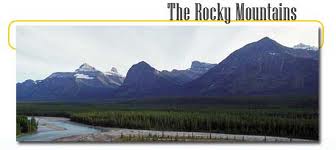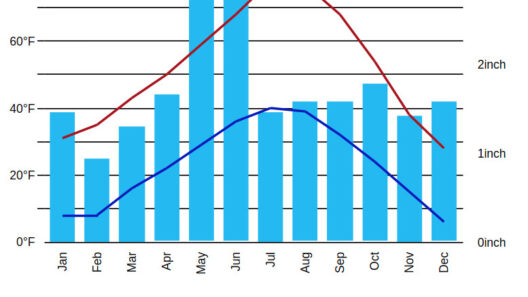Highland climate, sometimes referred to as alpine climate, leads to a compelling intersection between geography and weather phenomena. It is an intriguing meteorological category characterized by its cool temperatures, varied precipitation, and unique seasonal patterns. Above the clouds, the highlands of our planet present an array of ecological systems, each fostering a distinct set of conditions that influence both the flora and fauna found therein. But what truly captivates us about the highland climate is not merely its robust physical attributes; rather, it is its nuanced interaction with our planet’s broader environmental processes.
To grasp the essence of highland climate, one must first comprehend the nature of its elevation. Found primarily in mountainous regions, such as the Himalayas, Andes, and Rockies, this climatic zone sits at altitudes exceeding 2,500 meters (about 8,200 feet) above sea level. As one ascends into this terrain, the air diminishes in density and thus, holds less moisture. Consequently, temperatures plummet as altitude increases, leading to significant diurnal temperature variations. For instance, a sunny day may feature balmy conditions at midday, while nighttime temperatures can plunge to freezing levels, creating a sharp contrast in the climatic experience.
The highland climate is characterized by its pronounced seasons, which can sometimes be unsettlingly abrupt. Unlike the more temperate lowland regions that exhibit gradual transitions between seasons, highland areas may experience sudden changes that can catch residents and visitors off guard. For instance, during the summer months, intense sunlight can create a stark warmth, only for rain and even snow to appear unexpectedly. This volatility can heavily influence the lifestyle and activities of local inhabitants, who must adapt continuously to the whims of their environment.
A major contributing factor to the unique features of highland climate is its relationship with moisture. The altitude plays a pivotal role in precipitating weather changes. As moist air ascends the mountain slopes, it cools, leading to condensation and precipitation. This phenomenon is vividly observable in the form of orographic rainfall, where mountains act as barriers that cause moisture-laden winds to rise, cool, and subsequently shed their rain on one side of the peak. The other side, often called the rain shadow region, receives significantly less rainfall, illustrating the stark microclimates that can exist within proximity to one another.
The highland climate showcases its resilience and diversity through distinct ecosystems and biological communities. Flora in these areas have adapted remarkably to the rigors of their environment, often exhibiting characteristics such as tough, thick leaves that minimize water loss. Examples include the hardy cushion plants and resilient, slow-growing trees which endure long winters and short growing seasons. The bark of these trees is often thick and rugged, helping to protect them from freezing temperatures and harsh winds.
Fauna too, displays a rich tapestry of adaptations, ranging from the elusive snow leopard of the Himalayas to the hardy mountain goats that navigate steep cliffs with remarkable agility. Invertebrates such as alpine butterflies and ants have also evolved to thrive in this climate, establishing their own niches within the ecosystem. Each species contributes to the overall health and balance of the highland environment, demonstrating the importance of biodiversity in these unique locales.
Highland climates also serve as critical indicators of broader environmental change. The sensitivity of these regions to temperature fluctuations makes them vital indicators of climate trends. Glaciers, which can be found high above many peaks, are particularly glaring markers; their retreat reflects the impacts of global warming. As glaciers melt, they contribute not only to rising sea levels but also to the disruption of water supplies for millions dependent on glacier-fed rivers. This highlights the profound connection between highland climates and the wellbeing of those living at lower elevations.
The anthropogenic impact on these regions cannot be overstated. Agriculture, tourism, and urban encroachment have begun to encroach upon these delicate ecosystems. Farmers have to adapt to changing precipitation patterns and temperatures, often implementing sustainable practices to mitigate adverse effects. At the same time, tourism flourishes in these scenic highlands; however, it brings with it a host of challenges, including litter, habitat destruction, and the unintended consequences of infrastructure development. The juxtaposition of conservation efforts against economic growth creates an ongoing tension that demands careful management.
The fascination with highland climate extends beyond its scientific implications. The extraordinary landscapes inspire awe and wonder, calling adventurers to explore their majestic heights. Mountain climbing, hiking, or simply witnessing the sheer beauty of towering peaks under a veil of clouds can stir a sense of spiritual connection with nature. Highland climates encapsulate not merely a meteorological phenomenon but a living testament to the planet’s diverse environments and the intricate interrelations that bind them together.
In conclusion, the highland climate is a vivid tapestry woven from elevation, atmospheric dynamics, unique ecosystems, and anthropogenic influences. It is an echo of the ongoing dialogue between scientific inquiry and the human experience, urging us to pay closer attention to the natural world. Understanding and respecting these highlands is essential, not only for ensuring biodiversity and ecological integrity but also for acknowledging their role as critical barometers of climate health. As stewards of the environment, recognizing the fragility and magnificence of highland climates can help guide our actions as we navigate the challenges posed by a changing planet.








